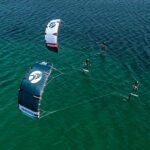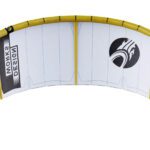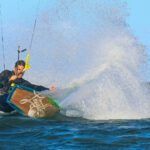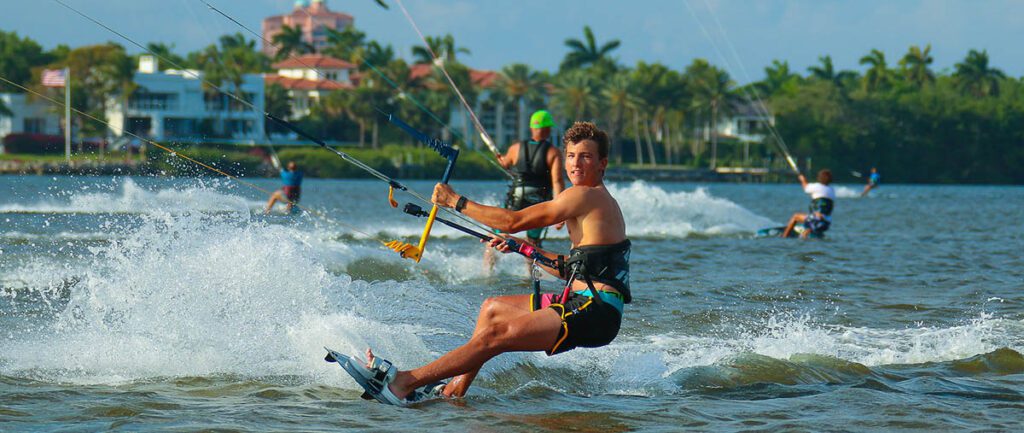
Comprehensive Guide on How to Get Started and Learn Kitesurfing.
Welcome to our comprehensive guide on how to get started and learn to kitesurf! If you’re an adventure seeker and water sports enthusiast, kitesurfing is an exciting and adrenaline-pumping activity you won’t miss. Whether you’re a beginner or have some experience, this guide will provide you with all the essential information you need to know to master this thrilling sport.
What is Kitesurfing?
Kitesurfing, also known as kiteboarding, is a water sport that combines aspects of surfing, wakeboarding, windsurfing, and paragliding. It involves riding a small surfboard or wakeboard while propelling a kite controlled by a bar attached to the rider’s harness. The wind powers the kite, allowing riders to perform impressive jumps, tricks, and maneuvers on the water.
Getting Started with Kitesurfing.
If you’re new to kitesurfing, starting with the basics is essential to ensure your safety and enjoyment. Here are the key steps to get started:
- Take a Lesson: We highly recommend lessons from a certified and experienced kitesurfing instructor. Proper instruction will teach you the fundamentals of kite control, safety procedures, and riding techniques. Understanding the wind, weather conditions, and safety protocols is crucial before venturing out on your own.
- Learn Kite Control: Controlling the kite is the foundation of kitesurfing. Using the bar and lines, you’ll learn how to launch, land, steer, and control the kite’s power. Practice in shallow water with a small kite to build your skills and confidence.
- Body Dragging: Once you’ve mastered kite control, you’ll learn how to body drag. This involves using the kite’s power to propel yourself through the water without the board. It’s an essential skill to learn as it helps you understand the kite’s power and how to navigate in the water.
- Water Starts: Once comfortable with body dragging, you’ll progress to water starts. This is where you’ll learn how to get up on the board and ride on the water while controlling the kite. Finding your balance and controlling the kite simultaneously takes practice, but with time and patience, you’ll get the hang of it.
- Riding Techniques: As you gain more experience, you can start learning different riding techniques, such as upwind riding, downwind riding, and jumping. These advanced skills will allow you to explore the full potential of kitesurfing and perform exciting tricks and maneuvers on the water.
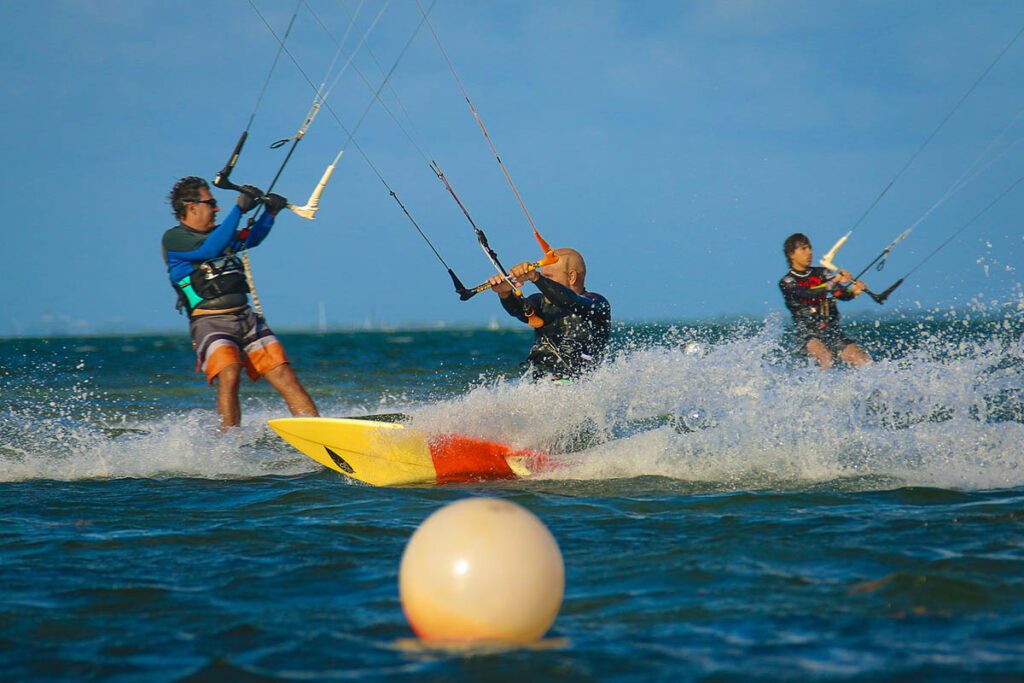
Essential Gear for Kitesurfing.
Having the right gear is crucial for a safe and enjoyable kitesurfing experience. Here are the essential items you’ll need:
- Kite: The kite is the most critical piece of equipment for kitesurfing. Various types and sizes of kites are available, and the right choice depends on your skill level, wind conditions, and riding style. Choosing a kite that matches your skill level and provides the right amount of power for the conditions is essential.
- Control Bar and Lines: The control bar and lines steer and control the kite. They are attached to your harness, allowing you to manipulate the kite’s power and direction. Make sure to choose a control bar and lines that are compatible with your kite and provide a comfortable grip.
- Harness: The harness is worn around your waist or hips and is used to connect you to the kite. It distributes the kite’s pull and allows you to control it with your body. There are different types of harnesses available.
- Board: The board is what you’ll be riding on the water. Different types of boards are available, such as twin tips, surfboards, and foil boards. Choose a board that suits your riding style and skill level. Twin tips are ideal for beginners as they are easy to ride and provide stability.
- Wetsuit: Kitesurfing is a water sport, and you’ll need a wetsuit to protect yourself from cold water and wind. Choose a wetsuit that fits well and provides adequate insulation for the water conditions in your area. Remember to wear booties, gloves, and a helmet for added safety.
- Safety Gear: Safety should be a top priority in kitesurfing. Always wear a kite leash, which attaches your kite to your harness, and a safety release system allows you to quickly release the kite in an emergency. A life vest and a whistle are also essential for added safety.
Best Practices for Kitesurfing.
In addition to mastering the skills and using the right gear, here are some best practices to keep in mind when kitesurfing:
- Check Weather Conditions: Before heading out to the water, always check the weather conditions, including wind strength and direction, tide, and currents. Avoid kitesurfing in extreme weather conditions or offshore winds, as it can be dangerous.
- Choose a Safe Spot: Choose a safe and designated kitesurfing spot suitable for your skill level. Avoid crowded areas, swimming zones, and areas with obstacles, such as rocks or piers. Follow local regulations and guidelines for kitesurfing in your area.
- Respect Others: Be respectful to other water users, swimmers, and beachgoers. Always yield to other watercraft and avoid interfering with other kitesurfers or water users. Keep a safe distance from people, boats, and wildlife.
- Practice Good Technique: Follow proper kitesurfing techniques and riding style to ensure your safety and the safety of others. Keep your kite high in the sky to avoid accidents and collisions. Practice controlled landings and avoid aggressive maneuvers if you’re a beginner.
- Stay Alert: Always be aware of your surroundings and stay alert. Keep an eye on the wind conditions, other kitesurfers, and any potential hazards in the water. If you feel tired or overwhelmed, take a break and rest.
- Take Lessons: Continuous learning is essential in kitesurfing. Consider taking advanced lessons from a certified instructor to improve your skills, learn new tricks, and stay updated with the latest safety protocols and techniques.
Conclusion:
- Kitesurfing is an exhilarating and challenging water sport that requires proper training, equipment, and safety precautions. With dedication, practice, and following best practices, you can learn how to kitesurf safely and enjoyably. Always prioritize safety, respect others, and stay informed about weather conditions and regulations in your area. So grab your kite and board, and get ready to experience the thrill of kitesurfing!
Author
Latest entries
 WatersportsOctober 20, 2024Chasing the Wind: Pushing Limits with the Cabrinha Moto X 12 Meters
WatersportsOctober 20, 2024Chasing the Wind: Pushing Limits with the Cabrinha Moto X 12 Meters WatersportsSeptember 16, 2024Cabrinha Moto X: Enjoy the Ride
WatersportsSeptember 16, 2024Cabrinha Moto X: Enjoy the Ride WatersportsMay 19, 2024Cabrinha 2024 Moto XL Review: The Ultimate Lightwind Kite
WatersportsMay 19, 2024Cabrinha 2024 Moto XL Review: The Ultimate Lightwind Kite WatersportsDecember 16, 2023Kiteboarding Travel
WatersportsDecember 16, 2023Kiteboarding Travel

